48-66 Westerlo Street
Introduction
Author-Uploaded Audio
Listen to a narration of this entry's description by Kim Parker .
Text-to-speech Audio
This long section of rowhouses located at 48-66 Westerlo Street lie in the heart of the Pastures Historic District. These handsome homes were built between 1828 and 1831, with the majority of their construction being attributed to Henry Rector and Darius Geer. A few of these homes were set aside to be used as rental properties for local innkeepers. Additionally, a property was occupied by a member of Geer’s brother.
This set of rowhouses demonstrate many aspects of Greek Revival architecture, featuring simple rectangular lintels and sills, flat friezes and simple cornices that line the top of the recessed doorways (many of which have pilasters). Similar to the buildings on South Ferry Street, the rowhouses were added to the National Register of Historic Places in 1972, and later added to the State Register with the passage of the New York State Historic Preservation Act in 1980.
Images
66-54 Westerlo St, Present Day

54-48 Westerlo St, Present Day

66-48 Westerlo St, March 1972

66 Westerlo St: note the entranceway
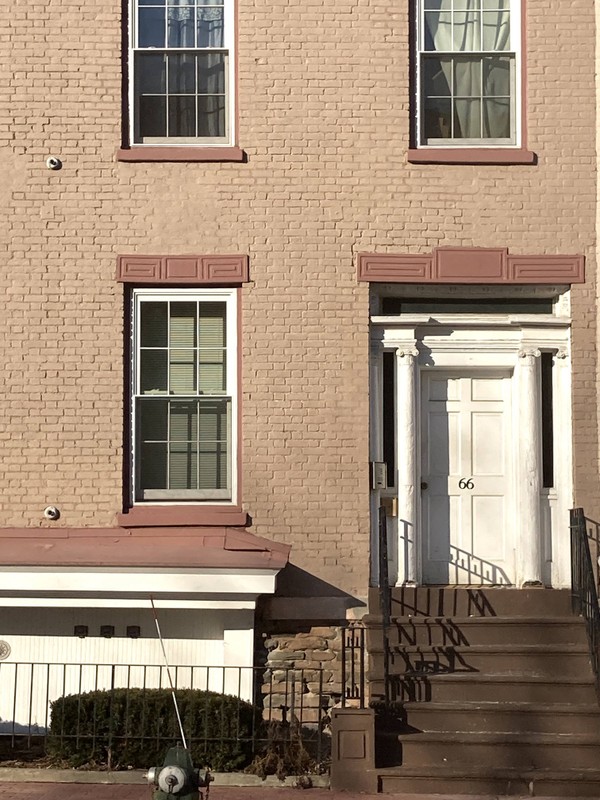
66 Westerlo St
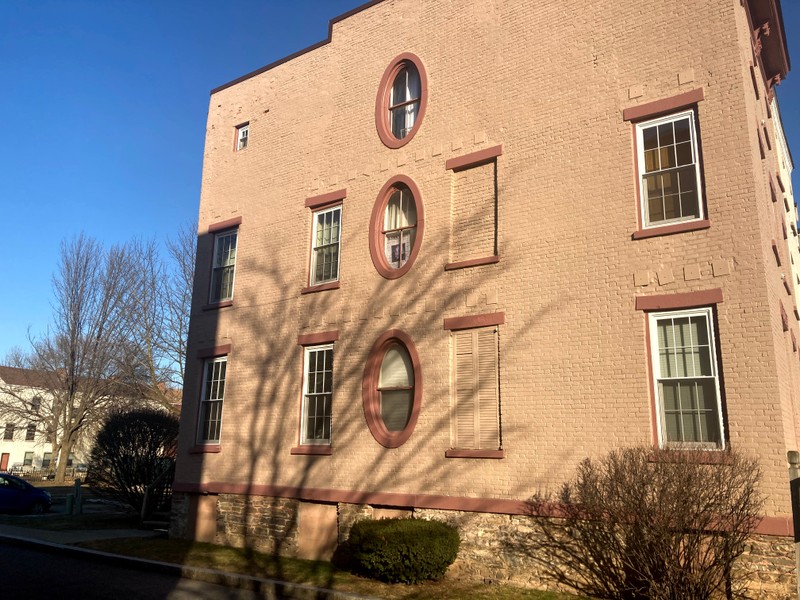
64 Westerlo St, March 1972

64 Westerlo St, Present Day: note the entranceway
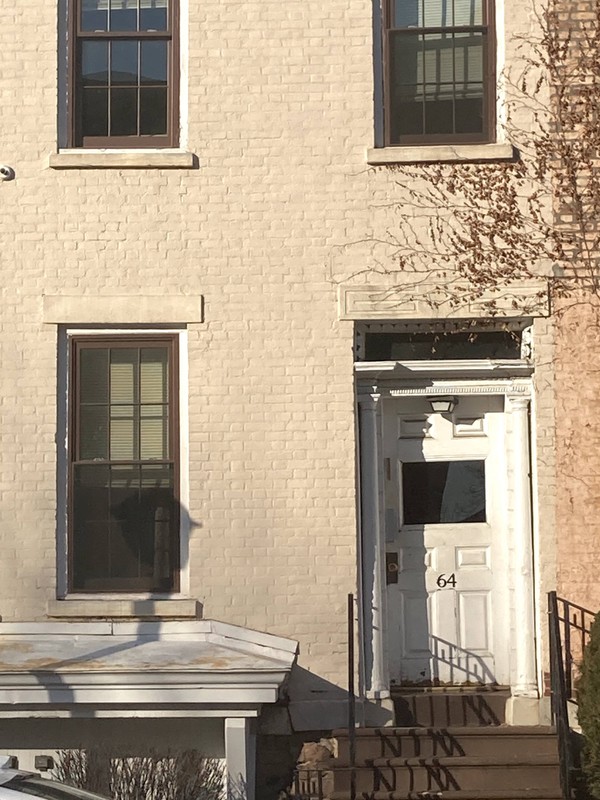
64 Westerlo St

62 Westerlo St
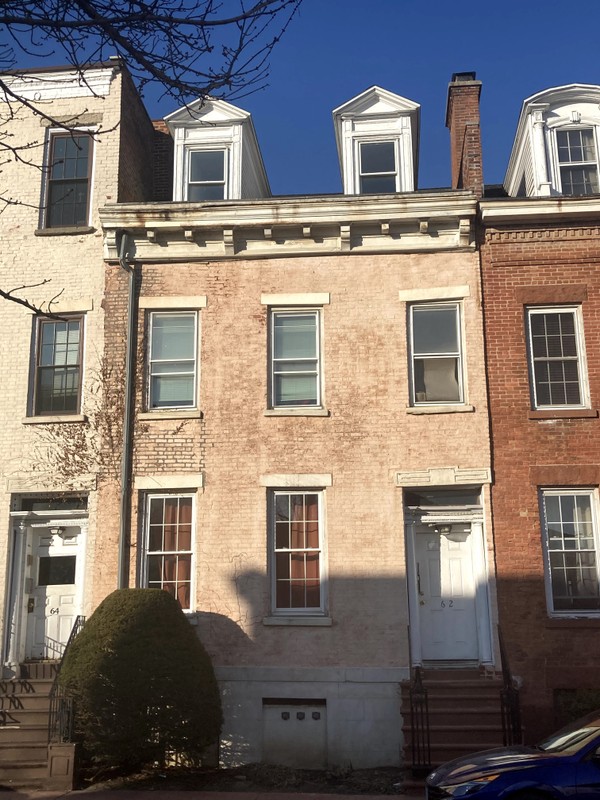
62 Westerlo: note the entranceway
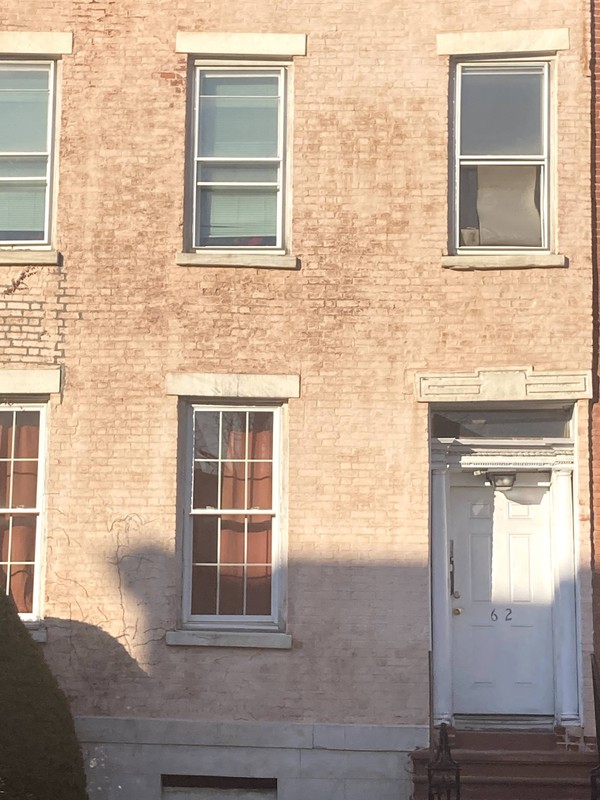
60 Westerlo St

60 Westerlo St: note the cornice
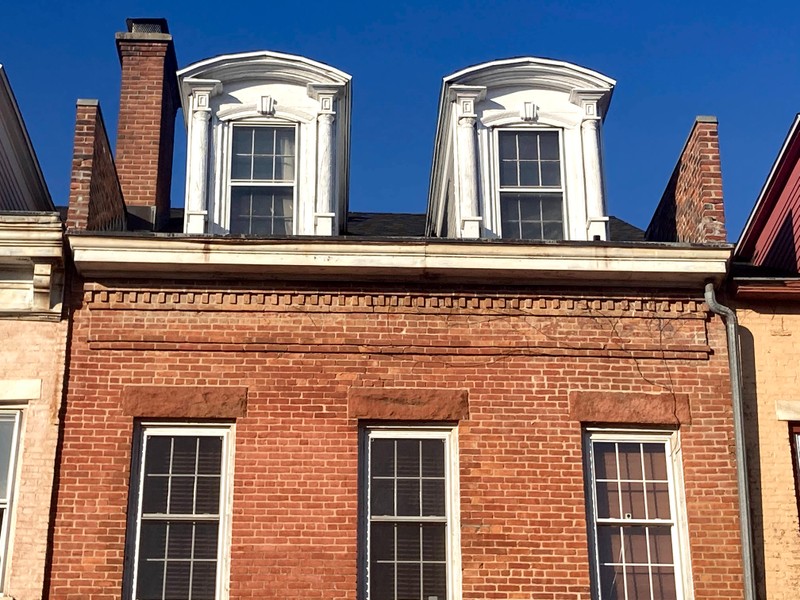
58 Westerlo St
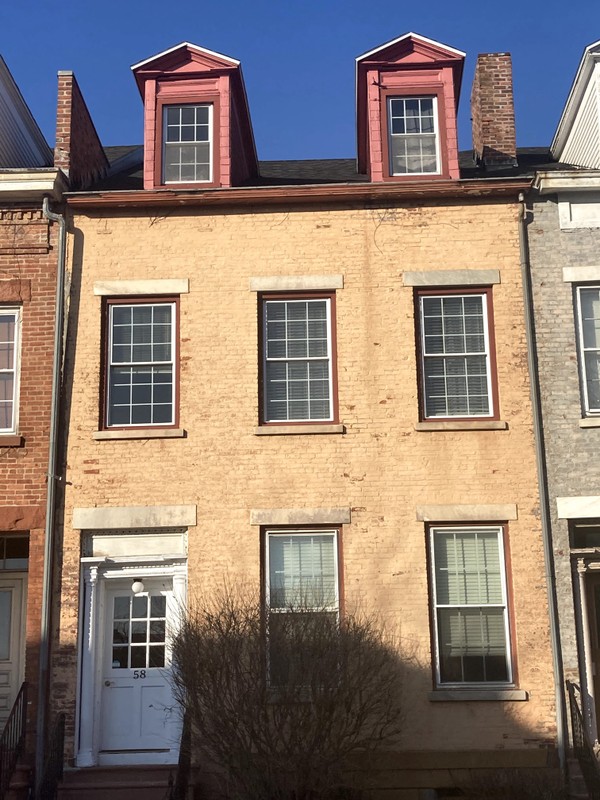
58 Westerlo St: note the entranceway

56 Westerlo St
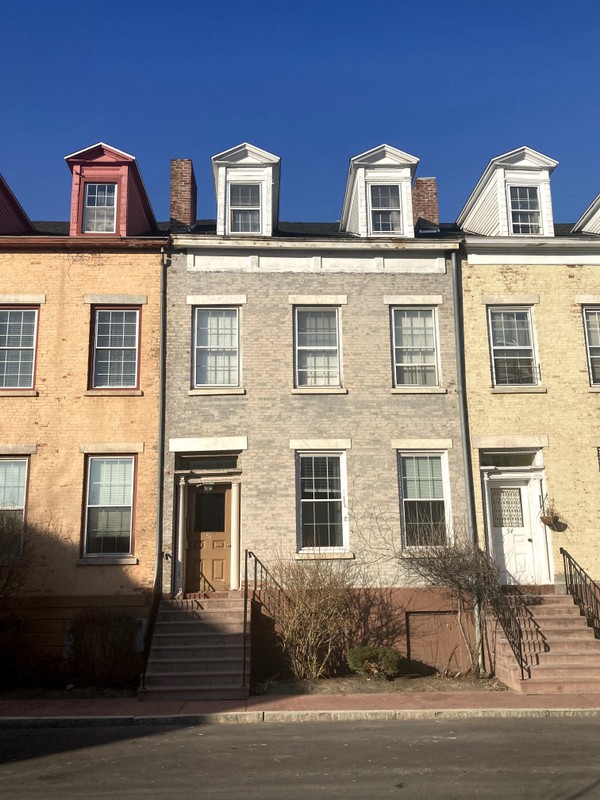
56 Westerlo St: note the entranceway
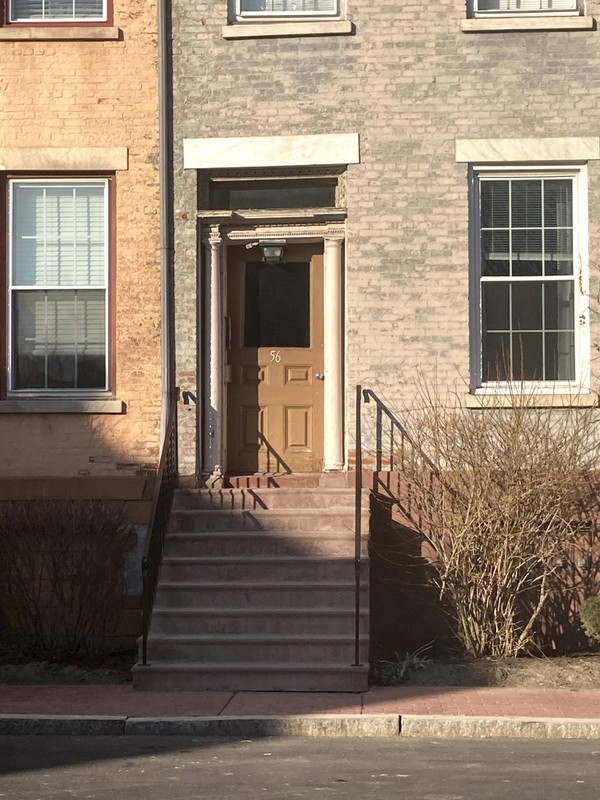
54 Westerlo St, March 1972

54 Westerlo St, Present Day

54 Westerlo St: note the entranceway

52 Westerlo St
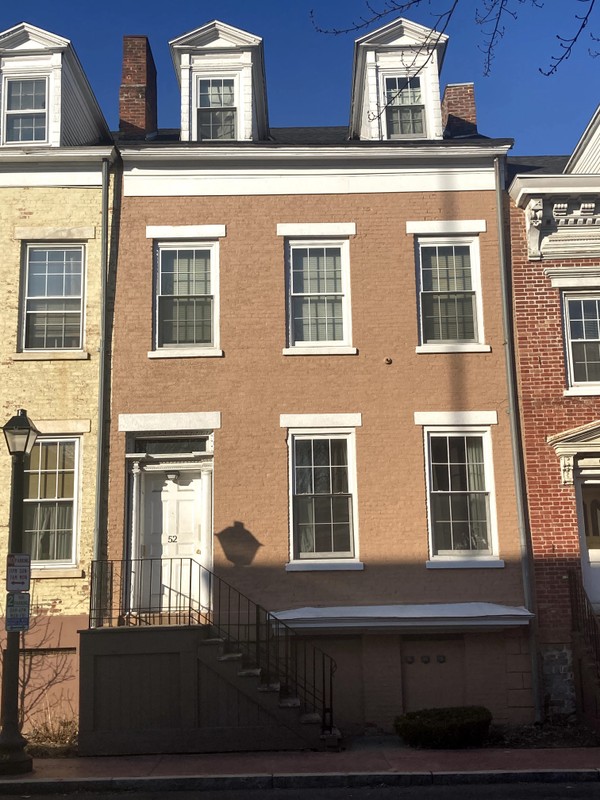
52 Westerlo St: note the entranceway

58-50 Westerlo St: note the cornice and frieze band

50 Westerlo St: note the pediment

50 Westerlo St: note the cornice

48 Westerlo St
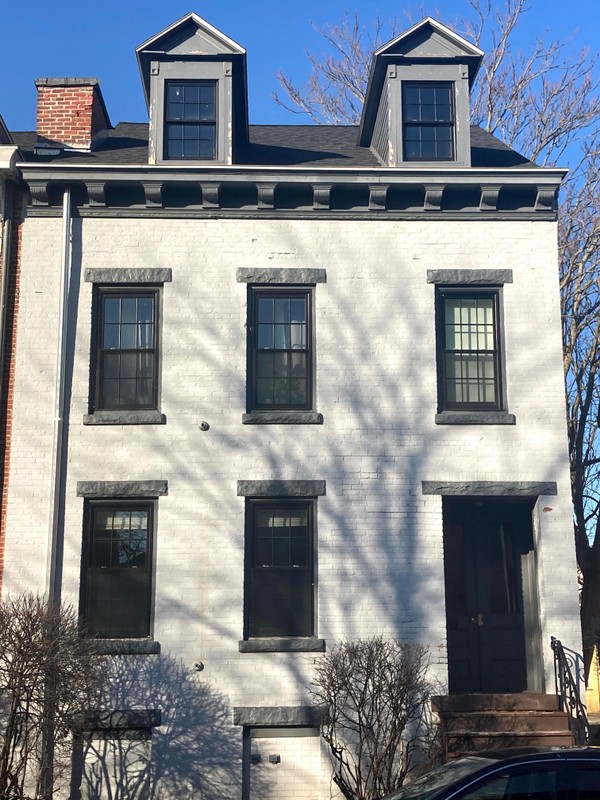
Backstory and Context
Author-Uploaded Audio
Listen to a narration of this entry's description by Kim Parker .
Text-to-speech Audio
The homes at 48-66 Westerlo Street are located in the Pastures Historic District in Albany. The land that these dwellings reside on was originally set aside by the Dutch founders of the city as a communal pasture in the early seventeenth century, giving the area its name. Albany became an English colonial city when it was granted a charter in 1686. The following year, the city deeded all of the pasture lands to the Dutch Reformed Church. Their ownership lasted until after the Revolutionary War. Eventually, after being encouraged by the City Council, the church divided the land into lots which were then sold off. The majority of the land was developed during the nineteenth century.
During the first period of development, the oldest buildings that remain within this district were constructed. These were constructed by merchants and manufacturers whose businesses were located in the South End, or by speculators who would rent out the properties to business owners. The second period of development, which occurred during the 1820s-1830s, differed from the first period. This time around, merchants and middle-class individuals were able to acquire single lots through auction to erect houses. Speculators were still involved, but they were typically carpenters or builders. They would purchase several consecutive lots, subdivide them, and then build dwellings. As development continued through the nineteenth century, some of the buildings from the first half of the century were modernized. Some of the modernizations included ornate friezes and bracketed cornices.
All of these rowhouses were built between 1828 and 1831, with some having been modernized during the late nineteenth century (like many of the other buildings in the Pasture district). As mentioned earlier, 48-58 Westerlo St are believed to have been built by Henry Rector and carpenter Darius Geer. 48 and 50 were set to be constructed for an innkeeper in 1828 to use as rental properties. Rector and Geer specifically purchased 52-58 to build and then sell one year later. Many of the early residents of the rowhouses are not known, however, one resident of 54 Westerlo St has an interesting connection to New York City: Seth Geer. Seth, Darius’ brother, occupied the rowhouse at 54 Westerlo St for a few years. Seth was a well-known builder in New York City during the mid-nineteenth century. He built Colonnade Row on Lafayette Street in the city’s NoHo neighborhood, also known as LaGrange Terrace. Henry Rector, after building these rowhouses with Darius Geer, went on to design and build other structures around Albany, inlcuding the New York Court of Appeals Building at 20 Eagle St.
These rowhouses all demonstrate characteristics of Greek Revival architecture. There are ten rowhouses, so take some time to look at each home and take in their interesting designs. They are all somewhat unique from each other. 60 Westerlo St has a recessed entrance with sidelights but no pilasters - a detail you may see with the other rowhouses’ entrance ways. There is also a large transom above the door, stone lintels, and simple rectangular sills that barely protrude from the facade. Lastly, the home at 60 Westerlo has a denticulated cornice and wide frieze band.
54 Westerlo St, once the residence of Seth Geer, has a recessed entrance with doric pilasters and a transom above the entranceway; many of the other buildings in these rowhouses have a similar design. The sills and lintels are both very simple and rectangular, and again we see how they barely project from the facade. The cornice isn’t elaborate, but the flat frieze band is present.
Lastly, 50 Westerlo St has a beautiful pediment above the door. The most notable feature of this home is the cornice. It can be speculated that this cornice was added later (towards the second half of the nineteenth century) as it is more Italianate; a style that was popular at that time. This is one of the modernizations that took place in the Pastures Historic District as development continued.
Enjoy this beautiful section of rowhouses! Continue west up Westerlo Street until you reach Trinity Place and Ash Grove Place for our next stop.
Sources
Bender, Matthew. Albany Architecture: A Guide to the City. Edited by Diana S. Waite. Albany: Mount Ida Press, 1993. https://books.google.com/books?id=B_M7vlQPa8kC&printsec=frontcover&source=gbs_atb#v=onepage&q&f=false.
Gray, Christopher. "Streetscapes: Colonnade Row: 428-34 Lafayette Street; Corinthian Columns That Have Seen Better Days." New York Times (New York, NY), Dec. 24,1995.
New York SP Pastures Historic District, 3/16/1972 [National Register for Historic Places Inventory - Nomination Form]; Records of the National Park Service, 1785-2006, Record Group 79; National Archives at College Park, College Park, MD [online version available through the Archival Research Catalog (ARC identifier 75316307) at https://catalog.archives.gov/id/75316307; February 25, 2021].
New York State Historic Preservation Office. 48 Westerlo St, Albany NY. CRIS Entry 00140.004206.
New York State Historic Preservation Office. 50 Westerlo St, Albany NY. CRIS Entry 00140.004207.
New York State Historic Preservation Office. 52 Westerlo St, Albany NY. CRIS Entry 00140.004208.
New York State Historic Preservation Office. 54 Westerlo St, Albany NY. CRIS Entry 00140.004209.
New York State Historic Preservation Office. 56 Westerlo St, Albany NY. CRIS Entry 00140.004210.
New York State Historic Preservation Office. 58 Westerlo St, Albany NY. CRIS Entry 00140.004211.
New York State Historic Preservation Office. 60 Westerlo St, Albany NY. CRIS Entry 00140.004212.
New York State Historic Preservation Office. 62 Westerlo St, Albany NY. CRIS Entry 00140.004213.
New York State Historic Preservation Office. 64 Westerlo St, Albany NY. CRIS Entry 00140.004214.
New York State Historic Preservation Office. 66 Westerlo St, Albany NY. CRIS Entry 00140.004215.
Rittner, Don, and Walter Wheeler. "Historic Albany Foundation Oldest Building Inventory (by date)." April 12, 2016. Accessed February 26, 2021. https://static1.squarespace.com/static/5567269ce4b02c6f5096564d/t/570d382862cd94966bf28b7a/1460484139292/OldestBuildingInventory_Date.pdf.
Waite, Diana S., ed. Architects in Albany. Albany: Mount Ida Press, 2009. https://books.google.com/books?id=saO7aeaoUy4C&printsec=frontcover&source=gbs_atb#v=onepage&q&f=false.
Historic Albany Foundation
Historic Albany Foundation
https://catalog.archives.gov/id/75316307
Historic Albany Foundation
Historic Albany Foundation
https://catalog.archives.gov/id/75316307
Historic Albany Foundation
Historic Albany Foundation
Historic Albany Foundation
Historic Albany Foundation
Historic Albany Foundation
Historic Albany Foundation
Historic Albany Foundation
Historic Albany Foundation
Historic Albany Foundation
https://catalog.archives.gov/id/75316307
Historic Albany Foundation
Historic Albany Foundation
Historic Albany Foundation
Historic Albany Foundation
Historic Albany Foundation
Historic Albany Foundation
Historic Albany Foundation
Historic Albany Foundation
